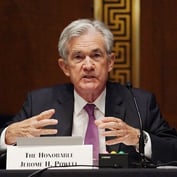What You Need to Know
- Treasury inflation-protected securities are a common holding of the target date funds that millions of workers use to save for retirement.
- A healthy couple following the 4% rule has an 80% chance of outliving savings invested in TIPS at today's rates.
- Advisors may think they can get better fixed income returns elsewhere, but rewards for taking risk are small in this inflated market.
According to the Investment Company Institute, 52% of American workers are saving for retirement in target date funds.
The most popular Vanguard family of target date funds places 20% of a worker’s retirement savings in Treasury inflation-protected securities at age 72. Today, the yield on five-year TIPS is -1.91%. In five years, the investor will get $908 in spending power from every $1,000 invested today in TIPS.
Some advisors will look at today’s TIPS rates and believe that they can take wealth out of a TDF, invest it in other bonds, and get a higher return while charging an AUM fee. To believe otherwise means acknowledging an investment reality that many advisors haven’t yet accepted.
This is the trouble with TIPS.
TIPS and the 4% Rule
The so-called 4% rule assumes that an investor can maintain an inflation-adjusted lifestyle equal to 4% of their initial savings at retirement. A retiree who buys $500,000 worth of TIPS on their 65th birthday could withdraw $1,666 a month of real spending ($20,000, or 4% of $500,000, per year) until a couple of months after they turn 86. Of the 20% of savings a target date retiree invests in TIPS at today’s rates, this money will last 21 years if they follow the 4% rule.
Healthy couples have a more than 80% chance of outliving savings invested in TIPS at today’s rates if they follow the 4% rule.
It’s easy to focus on the negative real return on TIPS as a way to dismiss their value as an investment. But TIPS are really a combination of two assets — a Treasury bond and an inflation hedge. The inflation hedge gives investors the ability to lock in a rate of inflation on their Treasury bond investments over time.
For example, the five-year Treasury bond yield is 1.27% today. By choosing TIPS instead of a nominal Treasury, the investor is able to lock in an inflation rate of 3.16%. The 3.16% is mostly the market’s expectation of the average inflation rate over the next five years, but also represents the value investors are willing to place on certainty.
Federal Reserve economists find that the inflation risk premium has varied over time, but on average is around 10 basis points (0.1%). In other words, investors get only a tiny bonus from bearing inflation risk instead of transferring it to the government.
In fact, investors who are simply willing to acknowledge the reality of negative real safe bond yields may be getting paid a premium for buying inflation protection. Larry Swedroe, chief research officer at Buckingham Wealth Partners, suggests using the Federal Reserve Bank of Philadelphia’s Livingston Survey of inflation forecasts from economists in industry, government, banking and academia as a reasonable estimate of inflation expectations.
The most recent survey pegged near-term inflation expectations at 3.7%, which is higher than the spread between TIPS and Treasurys. This isn’t the first time that the spread indicates that investors might be getting paid to buy inflation insurance.
Economists such as Boston University professor Zvi Bodie argue that TIPS are particularly valuable for retirees because they take away a significant source of lifestyle risk for a modest cost in average expected spending.
In other words, the 0.1% is a small price to pay for lifestyle insurance. David Blanchett, head of retirement research at PGIM, which offers a target-date investment (the DayOne series) that incorporates TIPS into their retirement portfolio, believes that TIPS provide value to retirees even at today’s rates.
“While the yields on TIPS are negative, the explicit inflation protection can be especially valuable to certain investors, especially retirees, who want an investment that tracks the underlying risk of their spending needs.” To Blanchett, annual retirement spending should be viewed as a liability, and a fixed income investment should be judged on its ability to meet the after-inflation lifestyle.
“Sure, there is a ‘cost’ associated with owning TIPS, but the benefit, like owning other forms of insurance, is that if inflation is high, the investor is covered,” Blanchett says. “While the relatively high spread versus nominal Treasurys may make them unattractive for some investors, there are certainly others that will be more than happy to purchase them under the assumption the yield differences accurately reflect expectations around risk.”
Back to Basics
It’s worth going back to basic finance theory to understand why investors take risk. In general, investors prefer certainty to risk because they are risk-averse. They will pay less for an asset that has the same expected payout (yield, dividend, capital gain) that is risky compared with an asset with a certain payout.
The risk aversion of the market determines how much of a discount investors need to buy a risky asset. In other words, risky assets should be cheaper because people prefer certainty, and lower prices for the same expected payout means higher returns on average.
Corporate bonds have purchasing power uncertainty and credit risk. TIPS take away both. If inflation continues to go up by 5% per year, the $1,000 invested in nominal Treasurys today will buy about $60 less than $908 worth of stuff in five years. If inflation is only 2%, then the investor might have an extra $50 to spend.
The real rate of inflation is unknown, so your client faces a range of spending possibilities in five years. Is that a risk they want to bear at such a modest potential risk premium?
The Credit Premium Conundrum
The good news is that investors don’t have to buy Treasurys at all. They can invest in corporate bonds that have historically outperformed Treasurys by rewarding investors for accepting a credit premium.









 November 30, 2021 at 09:55 AM
November 30, 2021 at 09:55 AM










